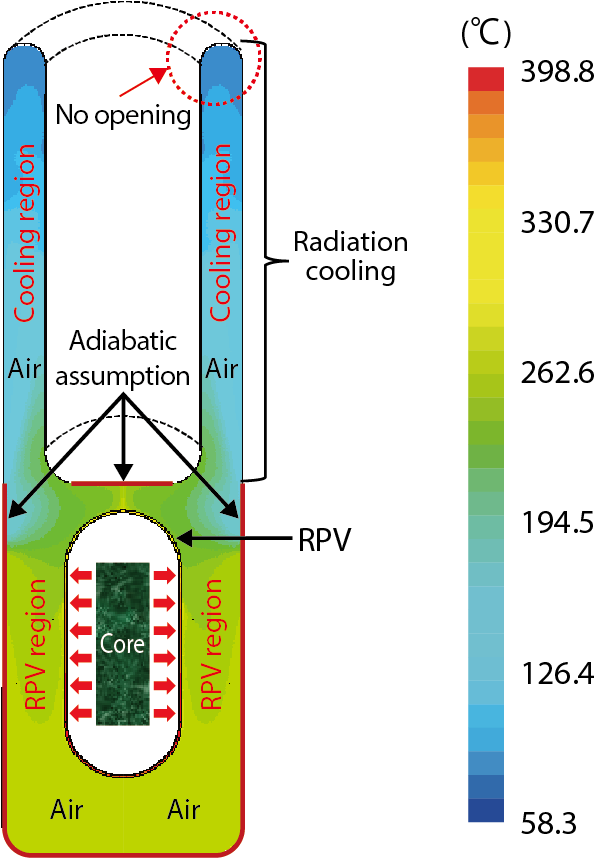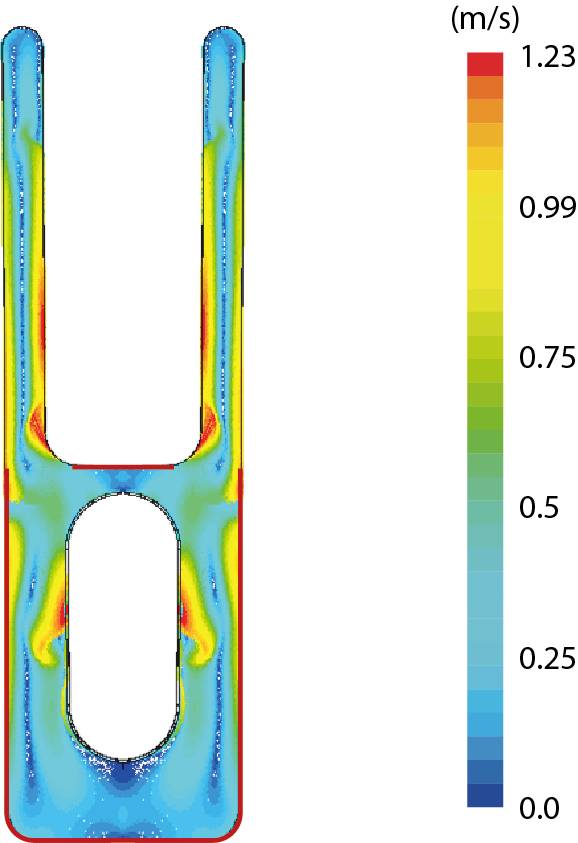
Fig.6-7 Analytical model and the analyzed temperature distribution

Fig.6-8 The analyzed velocity distribution
The disaster at the TEPCO’s Fukushima Daiichi NPS raised the expectations of High Temperature Gas-cooled Reactors (HTGRs). An HTGR avoids core meltdown (core melting) and a passive cooling system (which indirectly removes the heat from the reactor core) plays a crucial role during accidents. The High Temperature engineering Test Reactor (HTTR) located at JAEA is installed with a vessel cooling system (VCS) that removes the heat released from the RPV by pump-forced circulation of the coolant (water).
However, if the power supply is interrupted, the pump system cannot be driven, risking a significant reduction in the heat removal activity. In such cases, the HTGR avoids fuel failure but the RPV temperature could exceed the limit temperature. Therefore, we studied a heat removal method that minimizes the heat dissipation during normal operation and passively removes the decay heat during accidents without requiring active components and an emergency power supply. We also conducted a feasibility study of the heat removal method in a scale model (a heat-transfer test apparatus).
A cooling system based on passive natural atmospheric circulation is a likely candidate for commercial HTGRs. However, when the atmospheric inlet duct becomes stuck through incidents such as bird-strike, the heat removal activity of this type of cooling system is significantly compromised.
To resolve this difficulty, we propose a novel cooling system with a containment vessel, which relies on radiation cooling as far as possible. To double the number of surfaces in the radiation cooling region, we adopt a doughnut shape with inner, upper and outer surfaces (Fig.6-7). The heat-exchange area is further increased by machining each surface of the doughnut and adding structures such as fins. During normal operation of the HTTR, the RPV releases 1.2 to 2.5 kW/m2 of heat. In this research, the targeted heat release for commercial HTGRs is 3 kW/m2.
We first evaluated the thermal-hydraulics phenomena of the cooling system in detail. Even at an atmospheric temperature of 40 ℃, the temperatures of the structures (except in the reactor core itself) and the cooling system including the RPV never exceeded the temperature limit of 2 1/4Cr–1 Mo steel (550 ℃) during accidents. This result clarified the passive removal of heat from the RPV (Fig.6-7). The adiabatic boundary conditions were set to retain the heat in the RPV region, where the temperature is most severe, as much as possible. After adjusting the adiabatic boundary condition in future work, we will also increase the removable heat flux from the RPV region. Specifically, we will study the heat dissipation from the RPV region to the ambient environment such as ground. We will also reduce the temperature of the concrete, carbon steel and other materials around the RPV as far as possible, and consider the non-insulated heat transfer paths.
Because the air does not stagnate in the curved shape, the air velocity in the cooling system is approximately 1.2 m/s at most (Fig.6-8). This low velocity negates the need to promote natural convection through ducts via the chimney effect. Conversely, promoting natural convection can further promote the heat removal capacity.
In addition, when the reduction ratio of the scale model to the actual cooling system is x-1, the radiation cooling and natural convection of the actual cooling system can be simultaneously reproduced when the air in the scale model is pressed up to x1.5 times.
In summary, we conceptualized a novel decay-heat removal method for nuclear reactors during accidents, and demonstrated its feasibility in quantitative analyses.
Based on the analytical results of this research, we developed a scale model for further tests. Currently we are engaged in collaborative experimental research with Kyushu University.
This work was supported by the Japan Society for the Promotion of Science (JSPS) KAKENHI Grant–in–Aid for Scientific Research (C) (No.15K06676).